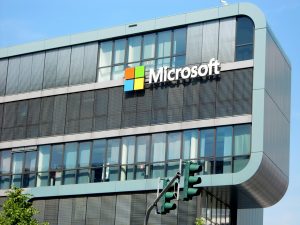What’s Next for Android: Google’s New Hardware Strategy
For the last few years, Google has rolled out a new version of Android every year. There is no reason to believe 2013 will be an exception. Android 5.0, aka “Key Lime Pie,” will replace Android 4.2, aka “Jelly Bean,” this year.
I have no idea what Android 5.0 will contain in terms of new features, but whatever it is![]() , it should bring new a new software cohesiveness to all the major Android use cases: smartphones, tablets and Google TV. Google NOW, introduced last June, could take center stage, especially on the smartphone.
, it should bring new a new software cohesiveness to all the major Android use cases: smartphones, tablets and Google TV. Google NOW, introduced last June, could take center stage, especially on the smartphone.
As interesting as the software always is, 2013 looks like it will be Google’s epic year for a new hardware strategy. Often overlooked, Google now has an unprecedented overlapping set of hardware strategies that will unfold in concert for the first time in 2013.
Let’s list Google’s unique hardware arsenal:
1. Regular Android Builders:
This is, and has been, the dominant share of Android, over 90% of Android today. Companies such as Samsung, HTC, Huawei, ZTE and Sony — just to mention the tip of the iceberg — make their own individual modifications to Android and sell them as such to the operators.
2. Nexus:
Essentially since the beginning (2008-2010 or so), Google has worked with various hardware partners who are also all part of category 1 above, to produce one or two reference devices every year. Until recently, these were not prominently marketed, and bought mostly by developers and extreme enthusiasts.
More recently, especially after Google got its online store together, sales of Nexus ![]() broadened beyond developers and enthusiasts. Then again, the ranks of developers and enthusiasts have swelled with the overall size of Android’s market share.
broadened beyond developers and enthusiasts. Then again, the ranks of developers and enthusiasts have swelled with the overall size of Android’s market share.
Last year, Jelly Bean 4.1 launched on the Asus Nexus 7 tablet as the freshest Nexus reference hardware. This year, one can envision that Android 5.0 could arrive on Nexus devices in all three current sizes — or even more — such as smartphone, 7-inch tablet and 10-inch tablet.
Who will make the various new Nexus hardware devices this summer? My bets are on HTC, Samsung, LG and Asus.
3. Motorola:
Last summer, Google’s acquisition of Motorola had just closed and Chicago was in no position to lead with a cutting-edge Android device that quickly, in time for Android 4.1 Jelly Bean. This year, however, a year will have passed since Google closed the acquisition of Motorola. Will this be enough?
Consider this: Last summer, Google was bragging that Asus was able to go from a standing start to shipping the Nexus 7 in only four months. Motorola will now have had a year. Surely, if Asus can do it in four months, Motorola has no excuse to take more than 12 months.
How would what Motorola does with Android differ from the categories listed above, “general” Android and Nexus? This comes down much to semantics, and the fact that Google needs to be sensitive to its partners.
On the one hand, Google wants Motorola to produce Nexus devices, true to Google’s vision for Android. On the other hand, Google can’t afford to alienate companies such as Samsung by showing special favoritism to Motorola.
So what does this mean for Motorola’s Android future? Motorola could launch smartphones and tablets that are Nexus — except in name. I expect Motorola to launch a portfolio of devices that look and smell just like Nexus, and will get software upgrades as quickly as Nexus in the future, but will not carry the name Nexus. They’ll simply come up with a new name!
This is new. Google recently launched a laptop — the Pixel — not through Nexus, not through Motorola, and not through some other hardware partner such as Samsung, Acer, Lenovo or HP. It was Google itself, from headquarters — not Chicago.
Last year, Google launched the ill-fated “Q” media player. It flopped rather badly and was effectively canceled before Google had a chance to collect any permanent customer cash for the first batch of shipments.
Where do you think the future Google glasses will be coming from? By all accounts, this initiative, too, is directed from some sort of skunk-works department at Google’s headquarters.
Given all of this, why wouldn’t this headquarters skunk-works department also go for the largest market of them all, Android? If Google itself can engineer TV media players and laptops, why not also smartphones and tablets?
If this is true — which I believe it is — then how would this “Google-only-branded” hardware differ from Nexus and Motorola, in terms of its software?
My answer: Only in name!
My theory is that whether it’s the extension of the current Nexus program, whether it comes out of Motorola in Chicago, or whether it’s Google’s own skunk-works development from headquarters, they will all be Nexus software in practice.
The name/label will differ — Google and Motorola will have their marketing departments come up with something futuristic and boring, respectively — but the software substance would be the same.
The point is this: Google wants to keep the software cohesive around its Nexus vision, but wants more hardware diversity around it. They accomplish this by having their Nexus partners compete both with Motorola as well as its internal skunk-works hardware team at Google headquarters.
What does this mean for Apple, Microsoft and BlackBerry?
Android now has close to 70% smartphone market share, up from zero little over five years ago. Most people agree that this has happened with Android lagging Apple in particular in terms of overall quality. No question about that.
But now it’s time for Android quality to catch up. If you have 70% market share and still rising rapidly, you can afford to segment your hardware products. You need to spread the risk and to allow more creative brains to differentiate the product.
“The world is not enough” might as well be this new overlapping set of numerous Google hardware strategies. It’s better to have several geniuses in several different camps working on different hardware variants, all running your one software load, than to have all of your eggs in one or two hardware baskets.
All of these numerous Android hardware strategies pursued by Google can be bewildering if you don’t spend all of your time looking at this stuff, and they would be easy to misinterpret.
However, I think they actually make sense. As long as the software delivers, these numerous overlapping hardware strategies are likely to deliver the best outcome for Google given its size and several constituents it needs to satisfy.
If you are Apple, Microsoft or BlackBerry, this does not look good for you. In front of you are numerous hungry and competing forces all looking to drive to Berlin to get there first. Google holds all the competitive cards here — except for the lack of physical stores a la Apple and Microsoft. Expect this summer to be a painful one for Google’s competitors. They will have their hands full.
[Cross-posted at The Street]
A message from John Furrier, co-founder of SiliconANGLE:
Your vote of support is important to us and it helps us keep the content FREE.
One click below supports our mission to provide free, deep, and relevant content.
Join our community on YouTube
Join the community that includes more than 15,000 #CubeAlumni experts, including Amazon.com CEO Andy Jassy, Dell Technologies founder and CEO Michael Dell, Intel CEO Pat Gelsinger, and many more luminaries and experts.
THANK YOU









